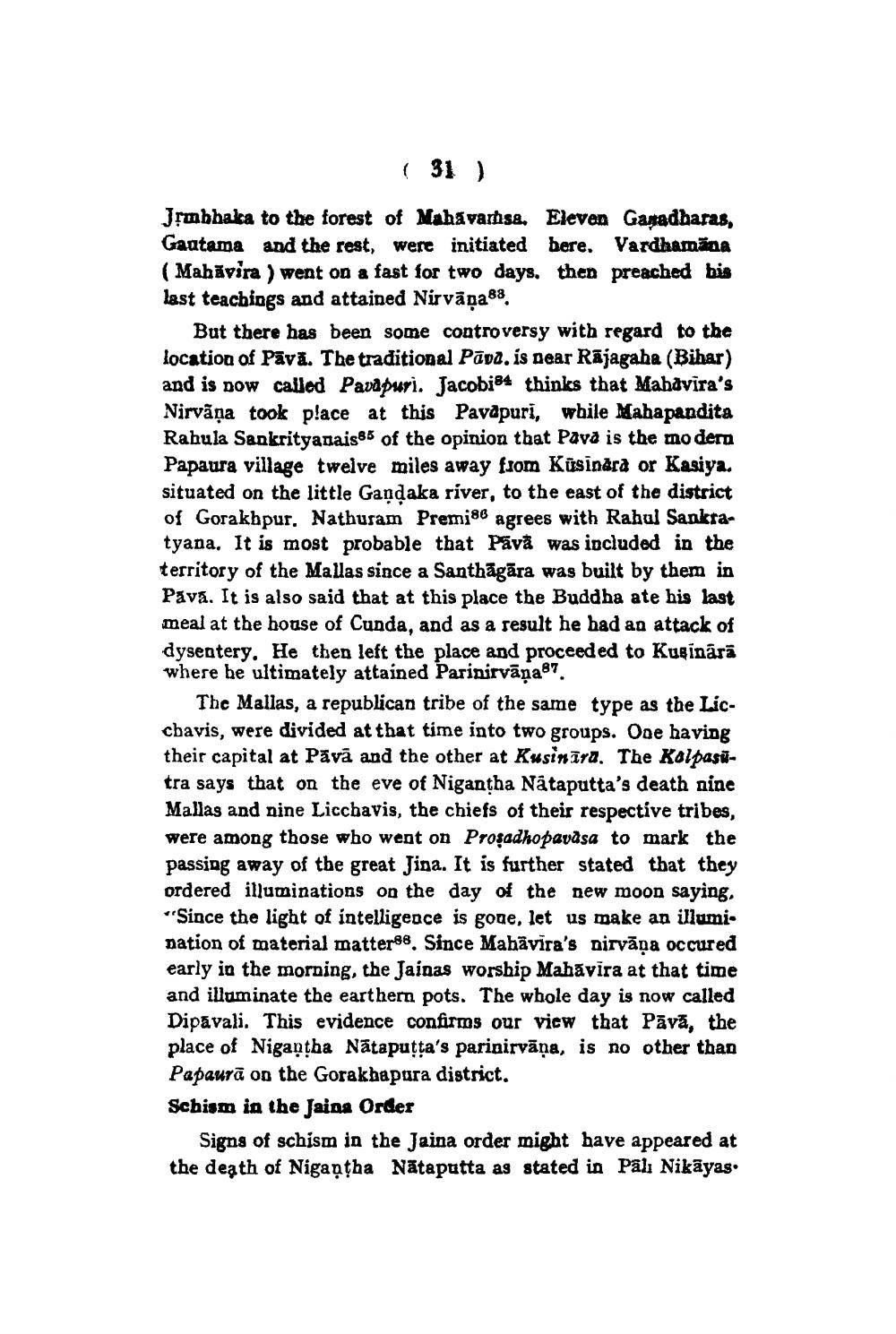________________
( 31 )
Jşmbhaka to the forest of Mahavarhsa. Eleven Ganadharas, Gaatama and the rest, were initiated here. Vardhamana ( Mahāvira ) went on a fast for two days. then preached bis last teachings and attained Nirvāpa88.
But there has been some controversy with regard to the location of Pāvă. The traditional Pāva.is near Rājagaha (Bihar) and is now called Pavapuri. Jacobi84 thinks that Mahavira's Nirvãņa took place at this Pavāpuri, while Mahapandita Rahula Sankrityanais85 of the opinion that Pavā is the modern Papaura village twelve miles away fsom Küsinara or Kasiya. situated on the little Gandaka river, to the east of the district of Gorakbpur, Nathuram Premiec agrees with Rahul Sankratyana. It is most probable that Pávå was included in the territory of the Mallas since a Santhāgāra was built by them in Pává. It is also said that at this place the Buddha ate his last meal at the house of Cunda, and as a result he had an attack of dysentery. He then left the place and proceeded to Kuginārā where he ultimately attained Parinirvāņa87.
The Mallas, a republican tribe of the same type as the Licchavis, were divided at that time into two groups. One having their capital at Påva and the other at Kusinīra. The Kolpasūtra says that on the eve of Nigantha Nataputta's death nine Mallas and nine Liccbavis, the chiefs of their respective tribes, were among those who went on Proşadhopavasa to mark the passing away of the great Jina. It is further stated that they ordered illuminations on the day of the new moon saying. "Since the light of intelligence is gone, let us make an illumi. nation of material matter88. Since Mahāvīra's nirvāṇa occured early in the morning, the Jainas worship Mahāvīra at that time and illuminate the earthern pots. The wbole day is now called Dipavali. This evidence confirms our view that Pāvā, the place of Nigantha Nātaputta's parinirvāṇa, is no other than Papaurā on the Gorakhapara district. Schism in the Jains Order
Signs of schism in the Jaina order might have appeared at the death of Nigaạtha Nātaputta as stated in Pálı Nikāyas.




